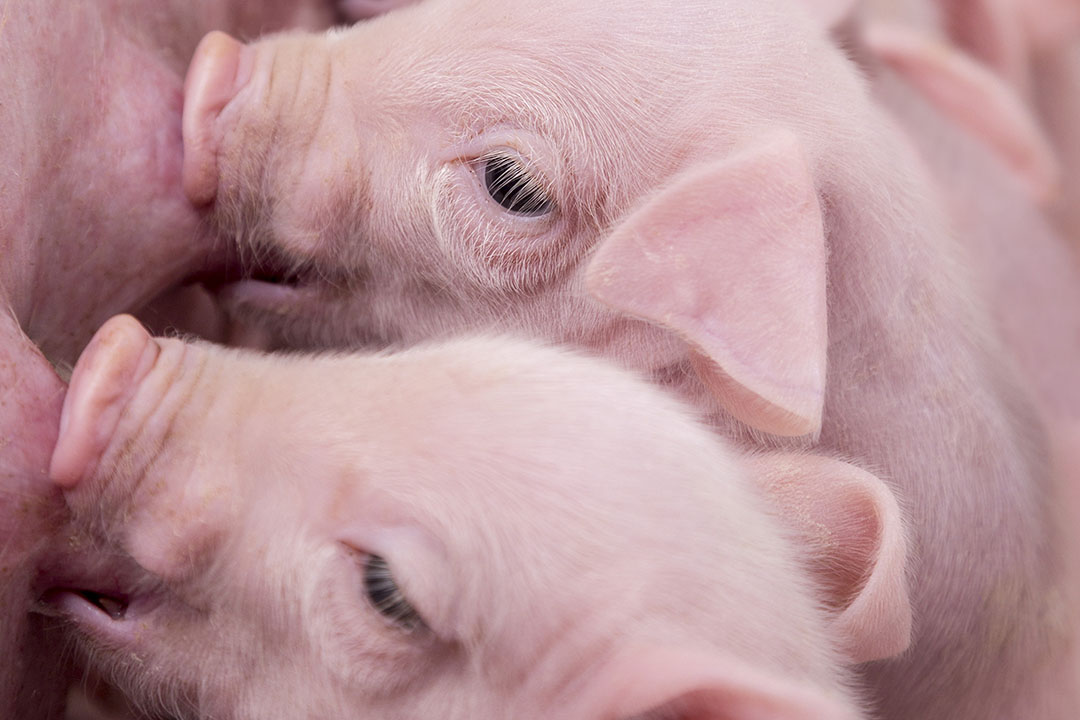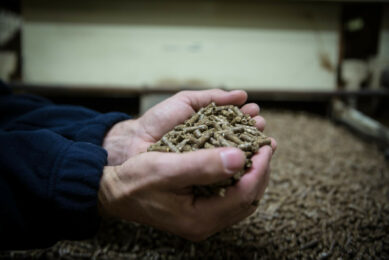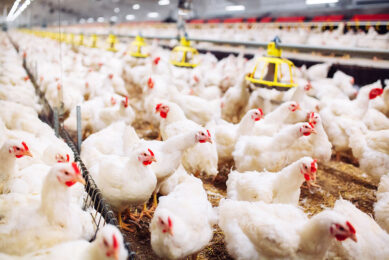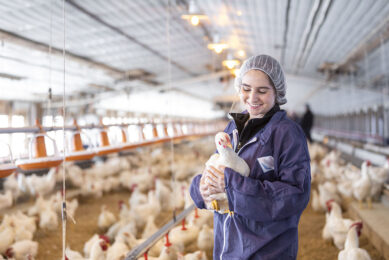Reducing neonatal diarrhoea without antimicrobials

Neonatal diarrhoea can occur in piglets in the first week of life. Piglet diarrhoea can be treated with antimicrobials administered orally or by adding preventive antimicrobials to the feed or water. Trials show that applying a ‘chain approach’ preventative strategy can help in reducing piglet diarrhoea and therefore reduce the need for antibiotics.
Common strategies for reducing antimicrobials in swine production include dietary measures that aim to prevent exposure to pathogens, support the animal’s defence system and achieve stability in the gastrointestinal tract (GIT). Sudden changes in feed composition and stress factors such as heat may threaten the GIT integrity, as destabilisation of the microbiota and alteration of barrier functions and immune responses may occur. In antibiotic-free production environments, the primary need is to prevent dysbiosis in the GIT and optimise the pig’s mucosal defence functions. Interventions impacting the sow also impact her piglets. Recent findings indicate that oral antibiotic treatment of sows has a negative effect on the intestinal microbiota composition in a piglet and intestinal morphology. Applying a ‘chain approach’ preventive strategy to reduce piglet diarrhoea can help producers effectively reduce the use of antimicrobials.
Life start sets life performance
Piglet diarrhoea in the first week of life is common in many herds. In many cases, the diarrhoea cause is infectious. One way to tackle neonatal diarrhoea is to apply a sow-piglet-axis in the chain. The physiological condition of suckling piglets is closely connected with the sow in the first weeks of life. Piglets receive energy and nutrient supply and immunological protection via the milk, and the microbial colonisation of the gastrointestinal tract via the milk and the environment. Microbiota analyses of piglets’ jejunal digesta show a resemblance in microbial composition compared to the microbiota from the sow (faeces and vagina), indicating that the first colonisers of the piglets intestine are derived from the birth canal (Figure 1). The development of the microbiota in the GIT tract of neonatal piglets is characterised by rapid and large changes in composition and diversity. These changes not only have short term effects on health and growth performance but affect later life disease resistance, immune competence and performance.
Figure 1 – Principle component analysis of microbiota composition from sows and piglets.

Pathogens and neonatal diarrhoea
Studies showing the relationship between maternal health and piglets’ early gut health demonstrates the need for an integrated approach that considers how sows performance and health status affects the performance of their offspring.
Research conducted by Trouw Nutrition has shown how the prevalence of different potential pathogens can affect swine production. High prevalence of Clostridium perfringens and Escherichia coli has been found in all ages of animals. Considering these pathogens are the most occurring bacterial causes of neonatal diarrhoea, it seems logical to find preventive solutions to reduce the infection pressure of these bacteria in sows, and in their environments thereby preventing diarrhoea and mortality in neonatal piglets.
Organic acids, short chain and medium chain fatty acids (SCFA and MCFA), exert antimicrobial activity against gram-negative and positive bacteria in the GIT. In this study, blends of SCFA-MCFA have proven to be effective in reducing the level of potential pathogens such as C. perfringens and E. coli, supporting the microbial balance in the sows and thereby reducing infection pressure in their offspring. Research conducted by a large swine integrator in Australia shows the shift in faecal microbiota in sows that received a diet supplemented with a combination of SCFA-MCFA during late gestation and lactation. This supplementation resulted in a significant reduction in shedding of C. perfringens and E. coli during the lactation period, reducing infection pressure (Figure 2).
Figure 2 – Influence of dietary treatment on log microbial counts in sow faeces at week 2 of lactation.

Growth performance in piglets
The results from a collaborative study between Trouw Nutrition and a university in Spain performed on a commercial farm showed positive effects on the growth performance of suckling piglets. Late gestation and lactation diets for sows were supplemented with a SCFA-MCFA blend, Selacid Green Growth. After 3 weeks of lactation, piglets from sows receiving Selacid Green Growth were heavier (+ 7%, +400g) compared to piglets from sows not receiving the feed additive. Furthermore, the coefficient of variation in body weight in the piglets was significantly reduced, -2.9%. There was no significant difference in the sows feed intake, but a significant reduction in back fat loss (Table 1). Research has shown that heaver piglets at weaning also perform better from wean-to-finish. Each additional ±0.5 kg at weaning results in nearly ±1 kg improvement at the end of the nursery phase and nearly ±2 kg improvement at finishing.
Successfully reducing antibiotic use
Further reductions in antimicrobials for prophylactic and therapeutic purposes will require a multi-stakeholder approach to achieve reduction targets while maintaining profitability. An integrator in Spain provides a good example. A reduction in standard antibiotic treatments in sow feed caused an increase in neonatal diarrhoea and was followed by the pre-weaning mortality rate spiking to 21%. While analyses showed that C. perfringens played an important role in the diarrhoea challenge, different vaccines failed to control the challenge. The farm stopped vaccinating sows against Clostridium. After using Selacid Green Growth in the gestation and lactation diet, sow faecal analyses showed improvements in the Lactobacillus/Clostridium ratio. Analysis of piglet diarrhoea showed fewer piglets with E. coli and C. perfringens challenges. The sow vaccination programme against Clostridium was resumed, and pre-weaning mortality decreased from 21% to 7%.
To sum up, research and trials show that an integrated approach supports swine producers’ efforts to reduce antimicrobials. Implementing dietary strategies that steer gut health can help producers achieve animal health, performance and profitability goals while reducing the use of antimicrobials. Only with an integrated approach from sow to offspring can we influence neonatal piglet health.
Author: Nienke de Groot, Global Programme Manager Gut Health – Feed Additives, Trouw Nutrition







